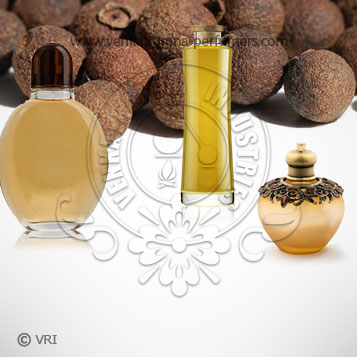
| Botanical Name | pimento officinalis myrtaceae |
| Common Name | Berry Essential Oil. |
| Country of Origin | West Indies |
| Solubility | insoluble in water, soluble in alcohol |
| Specific Gravity | 1.01800 to 1.04800 @ 25.00 °C. |
| Optical Rotation | -4.00 to 0.00 |
| Refrective Index | 1.52700 to 1.54000 @ 20.00 °C |
| PlantPart | Leaves |
| Bland With | Oriental, balsamic scented oils. |
| CAS No | 8006-77-7 |
| Flash Point | 81 °C |
| Extraction Method | Steam Distilled |
Pigmento Berry Essential Oil, offered by us, is extracted through the process of steam distillation from the West Indian tree, Pimenta Officinalis. It is widely used in the flavoring and perfumery industry. Christopher Columbus first discovered Allspice berries. At first, he thought that he had stumbled upon a new species of pepper during his second voyage to the New World. During 16th century Allspice was introduced into European and Mediterranean cuisines. Later it has been primarily cultivated in Jamaica.
Pimento berries derive from a tropical member of the myrtle family. It seems as though this tree couldn't quite make up its mind as to how it wanted to smell and so combined a bit of Clove with a bit of Cinnamon and a touch of Pepper. The combination works very well and Pimento oil smells beautifully spicy, yet less overpowering than either Clove or Cinnamon. In its native Caribbean and South American homelands, Pimento leaves and berries have long been used as a kitchen spice and herbal remedy. It was the first spice that was ever brought back to Europe from the New World. It soon gained popularity in the Old World too, and not just as a spice. Up until the last century it was official in the European pharmacopoeias. Herbal medicine rarely uses it now, but aromatherapy is bringing it back to public awareness.
Color : colorless yellow or reddish yellow liquid with spicy odor,
Aroma : It carries a combination scent of cloves, juniper berries, cinnamon and pepper.
Caryophyllene, cineol, eugenol, methyl eugenol, phellandrene.
Pigmento Berry Essential Oil is used in the frozen food industry for flavoring. It is also used extensively as an ingredient in creating men’s perfumes. Pimento berries are used in the folklore medicine of Mexico during the Pre-Hispanic period and the traditional Jamaicans used this remedial herb in tea and as a tonic for healing menstrual cramps, stomach problems and cold. The Haitian inhabitants in Cuba used Allspice in herbal preparations for treating digestive disorders and respiratory problems as well as toning the stomach. In traditional Ayurveda, it is popularly used to treat chest problems, rheumatism, depression, bronchitis and stress.